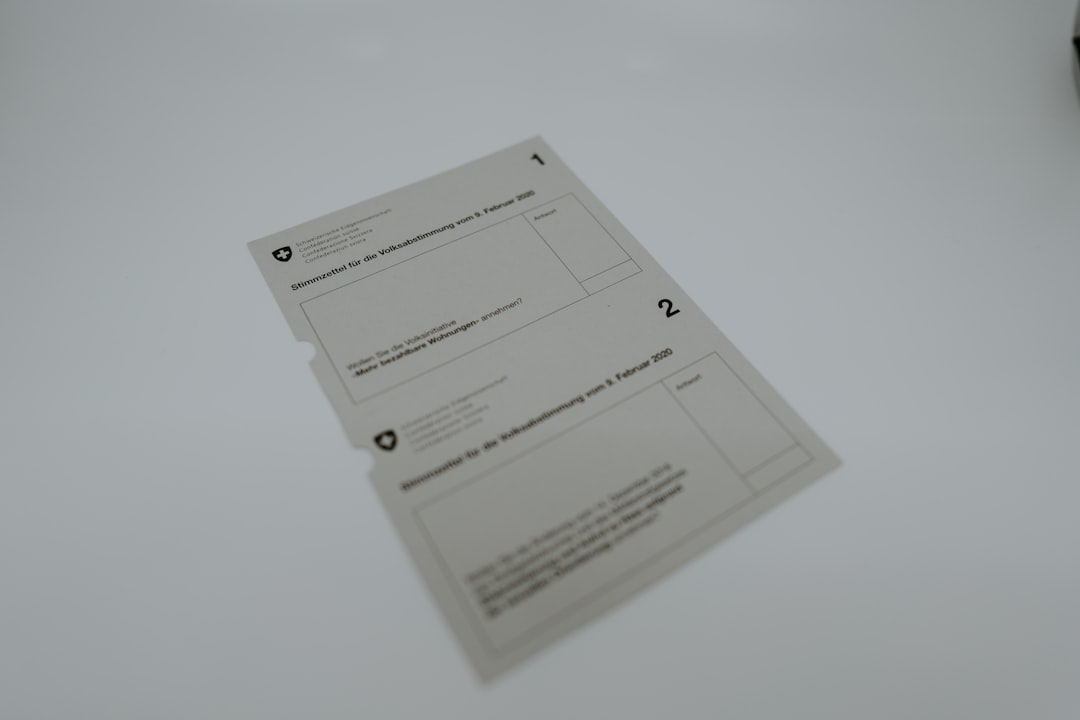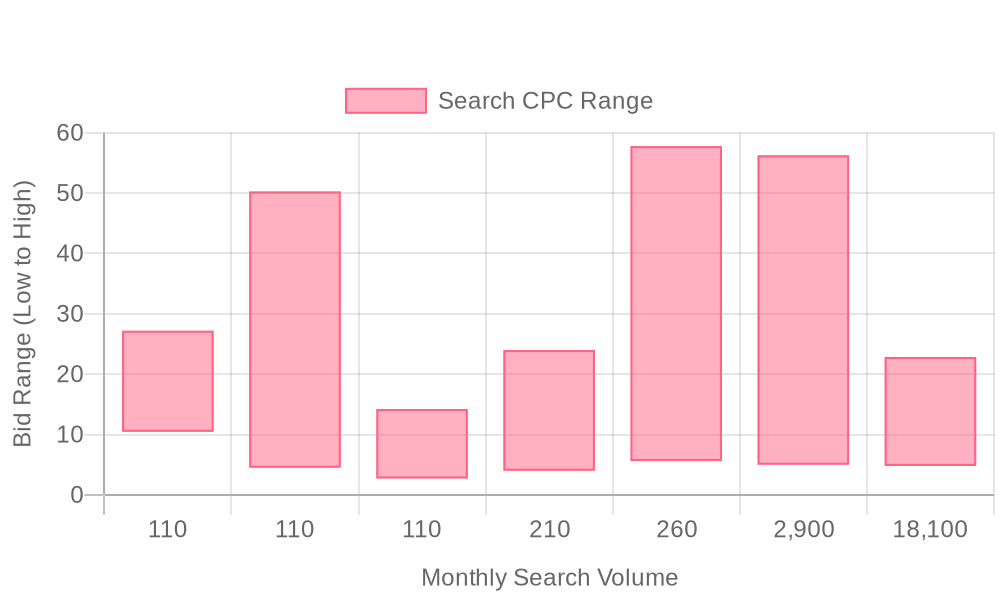
Supercharge your lead generation with a FREE Google Ads audit - no strings attached! See how you can generate more and higher quality leads
Get My Free Google Ads AuditFree consultation

No commitment
Supercharge your lead generation with a FREE LinkedIn Ads audit - no strings attached! See how you can generate more and higher quality leads
Get My Free Google Ads AuditFree consultation

No commitment
Supercharge your lead generation with a FREE Meta Ads audit - no strings attached! See how you can generate more and higher quality leads
Get My Free Google Ads AuditGet My Free LinkedIn Ads AuditGet My Free Meta Ads AuditFree consultation

No commitment
Supercharge your lead generation with a FREE Google Ads audit - no strings attached! See how you can generate more and higher quality leads
Get My Free Google Ads AuditFree consultation

No commitment
In today's complex marketing landscape, effective B2B marketing requires a strategic mix of both online and offline channels working in concert. Online channels like social media build digital brand awareness, email marketing nurtures ongoing relationships, and SEO drives organic visibility. Meanwhile, offline channels such as trade shows generate face-to-face connections, direct mail creates tangible touchpoints, and industry publications establish thought leadership. Within this integrated ecosystem, Google Ads plays a critical middle-funnel role by capturing high-intent prospects at the exact moment they're searching for solutions—effectively bridging the gap between broader awareness efforts and your sales process. Major challenges such as missing high-value prospects who aren't tracked in the CRM can erode potential opportunities. By understanding the mechanisms through which these prospects interact with your marketing, de-anonymizing traffic and catering to high-fit profiles can pivot your strategies effectively. For directory advertising businesses, approaching these obstacles can enable connecting digital touchpoints with offline sales. Complement other channels through remarketing to trade publication readers, event attendees, and digital audiences alike. For example, "For a local directory business, where local competition is fierce and buyer urgency is high, Google Ads enables you to intercept prospects at the exact moment they search for services like 'local plumbers in Chicago' or 'car repair directory Los Angeles.'"

Directory advertising has evolved into a high-intent, data-driven opportunity for B2B marketers and service providers. Leveraging Google Ads for Directory Advertising ensures every click, impression, and engagement can be tracked and attributed to real business outcomes.
Integrating paid search within your marketing mix delivers measurable access to buyers actively searching for directory services, driving qualified demand at scale. Smart marketers use this visibility to unify data, segment real-time audiences, and optimize campaigns to align with revenue goals—maximizing budget efficiency and conversion rates.
A strategic campaign setup focuses on capturing engagement signals and shortening the sales cycle, which is especially critical in competitive directories. Real-time identification of site visitors and in-market intent enables teams to prioritize high-value accounts, ensuring no potential lead slips through the cracks.
This playbook covers data-driven targeting, creative and landing page alignment, continuous performance optimization, and cross-channel integration. Each step is tailored for B2B and local directory operators seeking to maximize conversions and ROI from their Google Ads investments. For deeper insight into campaign optimization, explore our B2B marketing best practices.
The framework below provides a practical, step-by-step approach to unifying paid search with CRM, analytics, and audience management tools. Marketers gain a single view of each campaign’s impact, transforming Google Ads for Directory Advertising into a revenue-driving engine within the overall marketing ecosystem. Ready to see the impact for yourself? Get started for free with Sona.

Directory advertising thrives on timely visibility and precise targeting, which traditional channels cannot consistently deliver. Google Ads aligns directory businesses with buyers who search for solutions the moment they are ready to make decisions, elevating both lead quality and campaign efficiency. For in-depth strategies on maximizing your advertising impact, explore our B2B marketing reports guide.


Expanding reach in directory advertising requires a blend of precision targeting and strategic experimentation. B2B revenue teams seeking an edge must look beyond generalized directories to unlock new growth layers, leveraging data-driven insights to surface opportunities that align closely with business objectives.
Strategic use of these growth avenues not only uncovers untapped customer pools but also reduces risk from missed opportunities. When custom affinity audiences in Google Ads lack critical company profiles, unified data and intent-driven segmentation ensure that every advertising dollar works harder, converting high-fit leads that traditional approaches might leave behind. If you're ready to elevate your directory advertising strategy, get started for free with Sona.

Effective audience segmentation is pivotal to maximize ROI in directory advertising. By structuring campaigns to mirror the actual journey of your buyers, marketing teams elevate targeting precision and reduce wasted spend on mismatched prospects. To dive deeper into best practices, explore our B2B marketing strategies.
Employing segmentation in directory advertising reduces lead leakage and empowers sales and marketing teams to follow up with prospects at the ideal moment. This approach creates a more connected buyer journey, measurably increases conversion rates, and allows for adaptive, segment-specific engagement throughout the funnel. For those leveraging directory advertising on Google Ads, advanced segmentation and seamless data sync are critical to outperform static, one-size-fits-all campaigns. If you're ready to see the impact of real-time segmentation, get started for free with Sona.

| Industry | Keyword | Monthly Search Volume | Competition Level | Low Bid | High Bid |
| Directory Advertising | directory advertising | 110 | LOW | 10.45 | 27.2 |
| Directory Advertising | add business to yellow pages | 110 | MEDIUM | 4.5 | 50.28 |
| Directory Advertising | yellow pages business listing free | 110 | MEDIUM | 2.72 | 14.22 |
| Directory Advertising | yelp business listing free | 210 | MEDIUM | 4 | 24 |
| Directory Advertising | ms ads | 260 | LOW | 5.62 | 57.79 |
| Directory Advertising | add my business in google | 2900 | LOW | 5 | 56.27 |
| Directory Advertising | microsoft ad | 18100 | LOW | 4.8 | 22.85 |
Mastering keyword strategy is foundational for directory businesses seeking to maximize advertising ROI. Google Ads enables B2B teams to engage prospects who are actively searching for directory listings, business directories, and related services with high commercial intent.
While social media and email nurture early-stage awareness, Google Ads captures prospects precisely when they're evaluating solutions or ready to sign up. By meeting buyers at this pivotal stage, directory platforms generate qualified leads who are more likely to convert. Explore more marketing and attribution insights to refine your strategy.
**Strategic Value**
**How to Use This Strategy**
Integrating unified data insights at every stage ensures your keyword strategy remains agile and relevant. Modern platforms enable marketers to move beyond surface-level analytics: by identifying which companies are visiting your directory, tracking real-time audience intent signals, and dynamically updating audiences, teams make smarter bidding and creative decisions. This approach addresses the typical disconnect between digital channels, positioning directory advertising as a seamless part of a holistic demand generation plan. For additional tactics that align with this methodology, review retargeting strategies for B2B lead acquisition.
To experience these data-driven strategies firsthand, get started for free with Sona.
Precision in keyword selection forms the foundation of effective Google Ads for Directory Advertising. Segment keywords into tightly focused clusters based on your core service offerings: listings, premium subscriptions, and featured advertising placement. Tailor these groups with localization tactics—city, neighborhood, and “near me” modifiers—so ads surface for high-intent local searches that drive real business outcomes. For a comprehensive overview of digital advertising solutions, visit the Google Ads homepage.
Long-tail and question-based queries capture users deeper in the buying cycle, while negative keywords block irrelevant clicks and optimize budget efficiency. Align these search terms with the language used in your content marketing to ensure messaging remains consistent across channels, strengthening brand recognition. Marketers who sync real-time audience intent data and enrich profiles with firmographic insights can achieve even more granular targeting, enabling keyword lists that adapt as your prospects’ interests shift.
Ad copy for directory advertising must quickly resolve user pain points. Headlines should address immediate challenges—such as finding reputable service providers or unlocking exclusive placement opportunities—while supporting copy builds trust through third-party validations like certifications, user reviews, or notable client wins. Highlight urgency with time-bound incentives such as free trials or access to premium directory features, motivating prospects to take action.
Leverage all available ad extensions, including call buttons, structured snippets, and service highlights, to maximize ad real estate and offer clear next steps. Consistency is critical: mirror the tone, offers, and trust signals from your social and email campaigns to reinforce a unified brand experience. With integrated audience sync, B2B marketers can ensure that the most engaged leads—identified in real time—see tailored ad messaging as they move between channels, accelerating conversion velocity. To learn how to automate audience sync and segmentation, explore Sona.
A seamless journey from keyword to ad to landing page drives higher conversion rates for directory business marketing. Each landing page should align precisely with the search term and ad promise, segmenting experiences for local businesses, e-commerce partners, or other key audiences. Display directory statistics, trust badges, and a concise FAQ to establish credibility and answer common objections upfront.
Calls to action should remain prominent, clear, and optimized for mobile devices. Integrate forms directly with your CRM and marketing automation systems to enable instant lead assignment and personalized follow-up. When visitor identification tools capture granular firmographic and intent data, landing pages can dynamically personalize content or offers based on known visitor profiles, substantially increasing engagement and lead quality. If you want to see these solutions in action, get started for free with Sona.
Effective directory service ads rely on ongoing optimization driven by actionable data. Measure both micro conversions (e.g., form fills, click-to-calls) and macro conversions (e.g., qualified appointments, closed deals) to gain a holistic view of campaign impact. Use smart bidding strategies such as Target CPA or Max Conversions to focus spend on the highest-value leads. For more information on tracking and measuring conversions, see Google Ads conversion tracking.
A/B testing of headlines, CTA placements, and page layouts quickly reveals what resonates with each segment. Import offline conversion data—such as deals closed by sales or new business registrations—directly into your Google Ads account to further refine bidding and attribution models. Marketers leveraging unified data platforms can sync enriched offline and online conversion insights across their funnel, using these learnings to inform future content creation and campaign strategy for ongoing performance gains. For more tips, read our playbook on intent-driven retargeting.
Maximizing directory advertising requires a blend of precise targeting, actionable data, and creative content strategies. Modern revenue teams drive growth by leveraging integrated insights to engage high-value prospects with tailored messaging.
Expanding your directory advertising presence efficiently reduces churn risk by nurturing a consistent cycle of engagement and conversion. Robust audience segmentation, localized messaging, and smart content strategies work together to amplify your brand and drive sustained growth. For a deeper dive into advanced retargeting strategies, explore proven approaches that unify your data and accelerate results. Get started for free with Sona.
In conclusion, leveraging Google Ads for directory advertising can significantly enhance your business's visibility and attract a targeted audience actively searching for the products or services you offer. By strategically implementing Google Ads, you can effectively place your directory at the forefront of search results, capturing the attention of potential customers at the right moment.
Throughout this article, we’ve explored the core challenges of standing out in a competitive digital landscape and discussed key strategies for optimizing your ad campaigns. From understanding keyword targeting to crafting compelling ad copy, each step plays a critical role in driving traffic to your directory and increasing conversions.
The opportunity to transform your directory-based business's reach is within your grasp. By utilizing data-driven insights and adopting a strategic approach, you can not only enhance your online presence but also create meaningful connections with customers. This journey towards maximizing your directory's impact begins with taking actionable steps that align with your business goals.
To help you take the next step, we invite you to start for free and experience our platform's capabilities firsthand. Embrace the potential of unified go-to-market data and actionable insights to elevate your directory advertising efforts today.
To set up Google Ads for your directory business, you need to build targeted keyword lists, develop compelling ad copy, design effective landing pages, and implement data-driven optimizations to track performance and maximize ROI.
Best practices include precision targeting, measurable ROI tracking, integrating keywords that align with user intent, and using ad extensions to enhance visibility and conversion potential.
Target local customers by using localization tactics in your keyword strategy, such as city and 'near me' modifiers, and creating specific ad groups and landing pages tailored to local markets.
Google Ads is cost-effective for directory advertising by capturing high-intent prospects at the right moment, allowing for precise targeting and measurable outcomes, ultimately maximizing budget efficiency and conversion rates.
Track performance by measuring both micro and macro conversions, using smart bidding strategies, importing offline conversion data, and syncing enriched offline and online conversion insights for ongoing optimization.
Join results-focused teams combining Sona Platform automation with advanced Google Ads strategies to scale lead generation

Connect your existing CRM

Free Account Enrichment

No setup fees
No commitment required

Free consultation

Get a custom Google Ads roadmap for your business
Join results-focused teams combining Sona Platform automation with advanced Meta Ads strategies to scale lead generation

Connect your existing CRM

Free Account Enrichment

No setup fees
No commitment required

Free consultation

Get a custom Google Ads roadmap for your business
Join results-focused teams combining Sona Platform automation with advanced LinkedIn Ads strategies to scale lead generation

Connect your existing CRM

Free Account Enrichment

No setup fees
No commitment required

Free consultation

Get a custom Google Ads roadmap for your business
Join results-focused teams using Sona Platform automation to activate unified sales and marketing data, maximize ROI on marketing investments, and drive measurable growth

Connect your existing CRM

Free Account Enrichment

No setup fees
No commitment required

Free consultation

Get a custom Google Ads roadmap for your business
Over 500+ auto detailing businesses trust our platform to grow their revenue
Join results-focused teams using Sona Platform automation to activate unified sales and marketing data, maximize ROI on marketing investments, and drive measurable growth

Connect your existing CRM

Free Account Enrichment

No setup fees
No commitment required

Free consultation

Get a custom Google Ads roadmap for your business
Over 500+ auto detailing businesses trust our platform to grow their revenue
Join results-focused teams using Sona Platform automation to activate unified sales and marketing data, maximize ROI on marketing investments, and drive measurable growth

Connect your existing CRM

Free Account Enrichment

No setup fees
No commitment required

Free consultation

Get a custom Google Ads roadmap for your business
Over 500+ auto detailing businesses trust our platform to grow their revenue
Our team of experts can implement your Google Ads campaigns, then show you how Sona helps you manage exceptional campaign performance and sales.
Schedule your FREE 15-minute strategy sessionOur team of experts can implement your Meta Ads campaigns, then show you how Sona helps you manage exceptional campaign performance and sales.
Schedule your FREE 15-minute strategy sessionOur team of experts can implement your LinkedIn Ads campaigns, then show you how Sona helps you manage exceptional campaign performance and sales.
Schedule your FREE 15-minute strategy sessionOur team of experts can help improve your demand generation strategy, and can show you how advanced attribution and data activation can help you realize more opportunities and improve sales performance.
Schedule your FREE 30-minute strategy sessionOur team of experts can help improve your demand generation strategy, and can show you how advanced attribution and data activation can help you realize more opportunities and improve sales performance.
Schedule your FREE 30-minute strategy sessionOur team of experts can help improve your demand generation strategy, and can show you how advanced attribution and data activation can help you realize more opportunities and improve sales performance.
Schedule your FREE 30-minute strategy sessionOur team of experts can help improve your demand generation strategy, and can show you how advanced attribution and data activation can help you realize more opportunities and improve sales performance.
Schedule your FREE 30-minute strategy session





Launch campaigns that generate qualified leads in 30 days or less.
